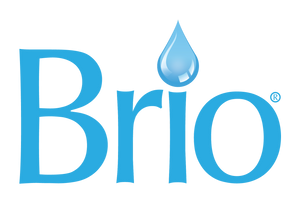Fall is back-to-school season, and with that, many kids are also heading back to the field, courts, pool, and other sporting arenas. Youth sports leagues are ramping up, and even those who didn’t make the team will still be practicing, shooting hoops, kicking balls, and getting more active.
It’s natural to want to ensure that your kids are properly hydrated while they play sports and exercise. But just how important is regular hydration for kids on the go, and how much water do they need? Let’s take a look.
Hydration for Kids: The Basics

Staying hydrated during warm weather seems obvious. You lose fluid through sweat and activity — and the same applies in the fall, even though it’s cooler. Your kids will be using and losing more fluid while they’re running, jumping, and scoring, so keeping them topped up is essential.
Every day, kids need at least one 8-oz cup of water per year of their age, up to a limit of 8 cups per day. So, your seven-year-old should drink 7 cups of water every day, but your 15-year-old needs 8 cups per day.
However, data from the CDC shows that many children and young people simply aren’t drinking enough water. When kids are active, that’s an even bigger problem. Dehydration during sports can lead to:
• Fatigue
• Lack of focus
• Digestive problems, including stomach pain
• Disrupted balance and falling
• Increased temperature
• Vomiting
A child who falls to their knees then gets up and carries on probably just needs a drink, a snack, and a brief rest. However, if at any point a child seems sluggish, unresponsive, feverish, or in pain, seek medical attention immediately.
Sports coaches and attending parents should ensure plenty of drinks are available for the young athletes, and be mindful of who shows signs of dehydration during a game.
The Benefits of Safe, Filtered Water

Sending your kids to their sports events with filtered water is safer than encouraging them to drink from fountains or other shared water sources. Unless the clubhouse, school, or other venue offers filtered water, there’s no way to know what contaminants the refreshment contains.
Water in the U.S. comes from a range of sources, and can carry contaminants including:
• Biological matter, like algae or parasites
• Disinfection by-products
• Pesticides
• Heavy metals
• Nitrates
As well as many other undesirable substances.
Investing in filtered water from a dispenser, cooler, or undersink system helps keep your kids safe from the potential health dangers associated with these contaminants.
You can have a water cooler literally anywhere in your home with the Brio 500 Series. This collection of innovative water dispensers offers a range of options, most of which include premium filtration. Plus, each includes conveniences like an LED nightlight and a self-cleaning function. Discover bottled, bottleless, and countertop coolers in this range.
Alternatively, options like the Brio Moderna 730 Series 4-Stage Reverse Osmosis Bottleless Water Cooler offer more advanced filtration. Reverse Osmosis (RO) uses incredibly fine membranes to filter out particles as small as 0.0001 microns. It’s considered one of the best forms of filtration for households wanting the cleanest, safest water possible.
Making Water Fun

Of course, hydrating beverages can be more fun than just plain water. Some young athletes may like electrolyte powders. These mix with water and provide enhanced muscle recovery and other benefits.
A simpler way to make water more interesting is by adding fresh fruit to make an infusion. Simply chop fruits and place them in the water. Oranges, limes, lemons, kiwis, and many berries are great for this.
You can also freeze fruity water into popsicles in your home freezer. Whole blueberries and ripe strawberries in the water can add a fun, fruity bite.
Boosting Hydration Through Diet

Hydration doesn’t just come from drinks. Plenty of foods are high in fluid content, and many are easy to introduce into even the fussiest eater’s diet. Try some of these options:
• Watermelon: This vibrant melon is mostly water and yet still deliciously fruity. You can freeze it for an extra refreshing treat.
• Zucchini: Make this green veggie more exciting by spiralizing it and using it as a spaghetti alternative.
• Cucumber: Mini cucumbers make a great snack, and larger cucumbers in slices are great in sandwiches and salads. Pickled cucumbers are okay, but look for a low-salt option, or they can end up being dehydrating.
• Tomatoes: Juicy, ripe tomatoes are rich in water and vitamins, making them a tasty, healthy snack. Tomato pasta sauces and soups also provide some hydration.
• Broccoli: A powerhouse of vitamins and minerals, broccoli is also nearly 90% water. Consider steaming, stir-frying, or blending into sauces to make it more appealing to kids.
Smoothies, soups, and sauces all contribute toward fluid intake. Just make sure these foods don’t contain too much sugar and salt, or they could have a negative impact on your children’s health.
With the range of water filtration options available right now, it’s never been easier to provide hydration for kids involved with sports and other active lifestyles. Browse the collection on the Brio website or contact Brio for more information.




